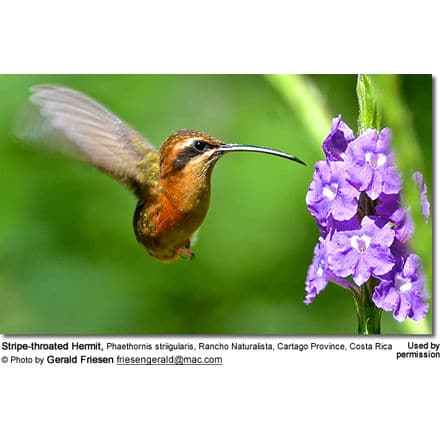Scimitar-babbler
The scimitar-babblers are birds in the genera Pomatorhinus, Xiphirhynchus, and Jabouilleia of the large Old World babbler family of passerines. These are birds of tropical Asia, with the greatest number of species occurring in the hills of the Himalayas.
Scimitar-babblers are rangy, medium-sized, floppy-tailed land birds with soft fluffy plumage. They have strong legs and are quite terrestrial. This group is not strongly migratory, and most species have short rounded wings and a weak flight.
Scimitar-babblers have long downcurved bills, used to work through the leaf litter, which gives the group its name. They are typically long-tailed, dark brown above, and white or orange-brown below. Many have striking head patterns, with a broad black band through the eye, bordered with white above and below.
Most scimitar-babblers are jungle species, difficult to observe in the dense vegetation they prefer, but like other babblers, these are noisy birds, and the characteristic bubbling calls are often the best indication that these birds are present.
As with other babbler species, they frequently occur in groups of up to a dozen, and rain forest species like the Indian Scimitar-babbler often occur in the mixed feeding flocks typical of tropical Asian jungle.
The genera are:
- Pomatorhinus: Pomatorhinus is a genus of scimitar-babblers, jungle birds with long downcurved bills. These are birds of tropical Asia, with the greatest number of species occurring in the hills of the Himalayas. These are medium-sized, floppy-tailed land birds with soft plumage. They are typically long-tailed, dark brown above, and white or orange-brown below. Many have striking head patterns, with a broad black band through the eye, bordered with white above and below. They have strong legs and are quite terrestrial. Like other babblers, these are noisy birds, and the characteristic bubbling calls are often the best indication that these birds are present. As with other babbler species, they frequently occur in groups of up to a dozen, and rainforest species like the Indian Scimitar-babbler often occur in the mixed feeding flocks typical of tropical Asian jungle.
The species are
- Large Scimitar-babbler, Pomatorhinus hypoleucos: The Large Scimitar-babbler is found in Bangladesh, Cambodia, China, India, Laos, Malaysia, Myanmar, Thailand, and Vietnam. They inhabit subtropical or tropical moist lowland forests and moist montanes.
- Spot-breasted Scimitar-babbler, Pomatorhinus erythrocnemis: The Spot-breasted Scimitar-babbler is found in Bangladesh, China, India, Laos, Myanmar, Taiwan, and Vietnam. They inhabit subtropical or tropical moist lowland forests and moist montanes.
- Rusty-cheeked Scimitar-babbler, Pomatorhinus erythrogenys: The Rusty-cheeked Scimitar-babbler found in Bangladesh, Bhutan, China, India, Myanmar, Nepal, Pakistan, Taiwan, and Thailand. They inhabit subtropical or tropical moist lowland forests and moist montanes.
- Indian Scimitar-babbler, Pomatorhinus horsfieldii: The Indian Scimitar-babbler is a resident breeding bird in India and Sri Lanka. Its habitat is forest and secondary growth. This species, like most babblers, is not migratory and has short rounded wings and a weak flight. This scimitar-babbler builds its nest in a bush or on the ground, concealed in dense masses of foliage. The normal clutch is two or three eggs. The Indian Scimitar-babbler measures 22cm including its long tail. It is dark brown above and white below. It has a striking head pattern, with a white supercilum above a broad black band through the eye. The nominate Indian race has grey or blackish flanks and breast sides, but the Sri Lankan subspecies, P. h. melanurus has these areas olive or concolorous with its upperparts. Indian Scimitar-babblers have long downcurved yellow bills and used to work through the leaf litter in search of their food which is mainly insects and berries. They can be difficult to observe in the dense vegetation they prefer, but like other babblers, these are noisy birds, and the characteristic bubbling calls are often the best indication that these birds are present. The call itself consists of a loud Ho Po Po followed sometimes by a tuck-too. The second note is produced by the female and the duet is very accurately synchronized
- White-browed Scimitar-babbler, Pomatorhinus schisticeps: The White-browed Scimitar-babbler is found in Bangladesh, Bhutan, Cambodia, India, Laos, Myanmar, Nepal, Thailand, and Vietnam. They inhabit subtropical or tropical moist lowland forests and moist montanes.
- Chestnut-backed Scimitar-babbler, Pomatorhinus montanus: The Chestnut-backed Scimitar-babbler is found in Brunei, Indonesia, Malaysia, and Thailand. They inhabit subtropical or tropical moist lowland forests and moist montanes.
- Streak-breasted Scimitar-babbler, Pomatorhinus ruficollis
- Red-billed Scimitar-babbler, Pomatorhinus ochraceiceps: The Red-billed Scimitar-babbler is found in China, India, Laos, Myanmar, Thailand, and Vietnam. They inhabit subtropical or tropical moist lowland forests and moist montanes.
- Coral-billed Scimitar-babbler, Pomatorhinus ferruginosus The Coral-billed Scimitar-babbler is found in Bhutan, India, Laos, Myanmar, Nepal, Thailand, and Vietnam. This bird species inhabits subtropical or tropical moist montanes.
- Xiphirhynchus: The Slender-billed Scimitar-babbler (Xiphirhynchus superciliaris) is a species of bird in the Timaliidae family. It is found in Bangladesh, Bhutan, China, India, Myanmar, Nepal, and Vietnam. it is the only member of the genus Xiphirhynchus. This bird species inhabits subtropical or tropical moist montanes.
- Jabouilleia: Jabouilleia is a genus of scimitar-babblers, jungle birds with long downcurved bills. The two species occur in Laos, Vietnam, and Myanmar. They are:
- Short-tailed Scimitar-babbler, Jabouilleia danjoui : The Short-tailed Scimitar-babbler is found in Laos and Vietnam. They inhabit subtropical or tropical moist lowland forests and moist montanes. The continued existence of this species is threatened by habitat destruction.
- Naung Mung Scimitar-babbler, Jabouilleia naungmungensis: The Naung Mung Scimitar-babbler is found in temperate rainforests on steep, sub-Himalayan hillsides. It was discovered in February 2004 in the far north of Burma and is named after the village of Naung Mung, the closest settlement to its discovery site. It is believed to be fairly common within its range. Due to its recent description, its conservation status has not been formally evaluated, however.



